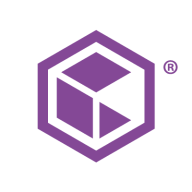

Commvault Cloud and Acronis Disaster Recovery compete in the backup and disaster recovery category. Commvault Cloud seems to have the upper hand due to its extensive cloud integration and hybrid data management capabilities.
Features: Commvault Cloud excels in backup and disaster recovery capabilities with extensive data management across hybrid and multi-cloud environments. It is known for its cost efficiency in long-term data retention and seamless integration with cloud services. Acronis Disaster Recovery is recognized for its cost-effective backup solutions and reliable performance.
Room for Improvement: Commvault Cloud faces challenges with complexity and a steep learning curve. The interface requires further enhancements for user-friendliness. Acronis could improve by incorporating real-time backup features and enhancing cross-platform support for better flexibility.
Ease of Deployment and Customer Service: Commvault Cloud is adaptable to on-premises and hybrid environments, although it has a steep learning curve. Its customer service is highly rated for timely and effective support. Acronis is praised for good customer service but needs improvements in localization and responsiveness.
Pricing and ROI: Commvault Cloud is not the cheapest but offers comprehensive features that justify its price, with users reporting significant ROI through operational efficiencies. Acronis is seen as a more cost-effective solution for specific environments with competitive pricing and notable ROI in disaster recovery scenarios. Both platforms provide value, but their pricing structures vary to cater to different scales and priorities.


Acronis Disaster Recovery Service is a hybrid cloud, all-in-one, IT continuity solution that protects and restores your data and servers in the event of a natural or man-made disaster. Leveraging the power of the Acronis AnyData Engine, Acronis Disaster Recovery Service can reliably recover your servers or entire data centers without the need for you to invest in duplicate systems or additional staff.
Acronis Disaster Recovery Service can reliably recover your servers or entire data centers without the need for your organization to invest in duplicate systems or additional staff. Providing flexible recovery time objective (RTO) options, Acronis Disaster Recovery Service combines the high performance and shortest recovery time of a local appliance with the low cost, predictability, and accessibility of a virtual private cloud.
Commvault Cloud is the ultimate cyber resilience platform built to meet the demands of the hybrid
enterprise. Beyond its core functionality of data backup and recovery across diverse workloads, including applications, databases, virtual machines, and files, Commvault Cloud stands out as a robust defense against ransomware. Going beyond backup, the platform integrates advanced data security features such as encryption, access control, and threat detection, safeguarding against unauthorized access and cyber threats.
With tools for data management, classification, and migration, businesses can optimize storage costs, enhance accessibility, and comply with regulations seamlessly. Boasting cloud integration with major providers like AWS, Azure, and Google Cloud, Commvault Cloud leverages the scalability and flexibility of the cloud for comprehensive data protection and management. The platform's automation capabilities streamline tasks, and its reporting and analytics features provide valuable insights into data usage, potential risks, and optimization strategies. Commvault Cloud is not just a security tool; it is a key component of cyber resilience, enabling organizations to not only protect against cyberattacks but also recover swiftly and minimize the impact of incidents. Elevate your cyber resilience strategy with Commvault Cloud.
We monitor all Disaster Recovery (DR) Software reviews to prevent fraudulent reviews and keep review quality high. We do not post reviews by company employees or direct competitors. We validate each review for authenticity via cross-reference with LinkedIn, and personal follow-up with the reviewer when necessary.